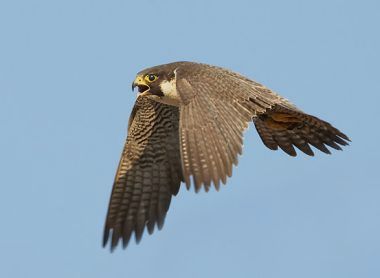 Since US Airways Flight 1549 made a forced landing in the Hudson River last Thursday, the subject of airplane-bird collisions (called “bird strikes”) has been much in the news.
Since US Airways Flight 1549 made a forced landing in the Hudson River last Thursday, the subject of airplane-bird collisions (called “bird strikes”) has been much in the news.
The Associated Press reported this morning, “The birds flew majestically, in perfect formation, and the co-pilot saw them coming. For a moment, it looked like they would pass beneath US Airways Flight 1549, but when Capt. Chesley B. Sullenberger looked up, they were there in his windscreen. Big. Dark brown. Lots of them.”
If I was to guess I’d say the birds in question were Canada geese. The collision disabled both jet engines. Miraculously the pilot landed the crippled plane on the river and all on board escaped safely. The geese undoubtedly died.
As air traffic has grown and birds have become accustomed to airplanes and airports, the number of bird strikes has increased. Several airports have taken measures to keep the airways safe. One of the most effective involves peregrine falcons.
At New York’s JFK, Toronto’s Pearson and Montréal-Trudeau airport a company called Falcon Environmental Services uses falconry techniques to clear the air. When the falcons fly, other birds stay away as much as a mile. Though the company uses additional bird control methods including bird distress calls, pyrotechnics and propane cannons, those methods wear off when the problem birds learn to ignore them, but their fear of peregrines never fades.
The falconers position the peregrines to target the biggest problems: large birds and flocks. Canada geese fit both categories so getting them out of the area is the number one goal. Gulls can be a problem too, especially at JFK which is right next to a large gull nesting area: Jamaica Bay.
Airport patrol is a full time job. It works well, but when the falcons are gone the problem birds come back. So it’s important to keep flying.
Luckily, that’s what a peregrine loves to do!
For a video of the peregrines in action at JFK, click here.
(Peregrine falcon photo by Kim Steininger)
Very interesting information. I had no idea that the airports were using these tactics.